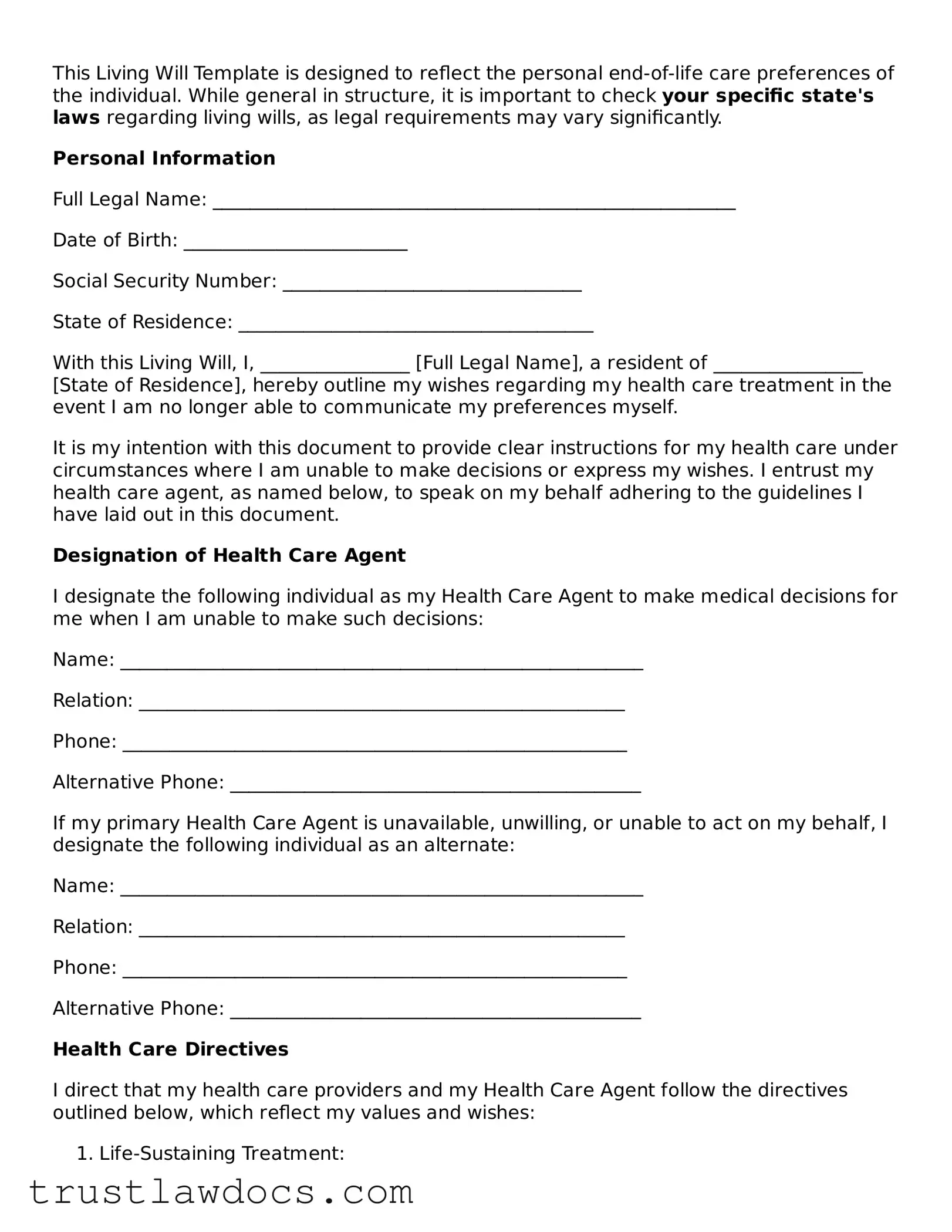This Living Will Template is designed to reflect the personal end-of-life care preferences of the individual. While general in structure, it is important to check your specific state's laws regarding living wills, as legal requirements may vary significantly.
Personal Information
Full Legal Name: ________________________________________________________
Date of Birth: ________________________
Social Security Number: ________________________________
State of Residence: ______________________________________
With this Living Will, I, ________________ [Full Legal Name], a resident of ________________ [State of Residence], hereby outline my wishes regarding my health care treatment in the event I am no longer able to communicate my preferences myself.
It is my intention with this document to provide clear instructions for my health care under circumstances where I am unable to make decisions or express my wishes. I entrust my health care agent, as named below, to speak on my behalf adhering to the guidelines I have laid out in this document.
Designation of Health Care Agent
I designate the following individual as my Health Care Agent to make medical decisions for me when I am unable to make such decisions:
Name: ________________________________________________________
Relation: ____________________________________________________
Phone: ______________________________________________________
Alternative Phone: ____________________________________________
If my primary Health Care Agent is unavailable, unwilling, or unable to act on my behalf, I designate the following individual as an alternate:
Name: ________________________________________________________
Relation: ____________________________________________________
Phone: ______________________________________________________
Alternative Phone: ____________________________________________
Health Care Directives
I direct that my health care providers and my Health Care Agent follow the directives outlined below, which reflect my values and wishes:
- Life-Sustaining Treatment:
In the event that I am in a terminal condition, permanently unconscious, or otherwise unable to regain a meaningful quality of life, I do / do not (circle one) want life-sustaining treatments to be provided or continued.
- Artificial Nutrition and Hydration:
I do / do not (circle one) want to receive artificially provided food and water if I am unable to take food by mouth and such interventions would only prolong the dying process.
- Pain Management and Comfort Care:
I wish to receive medication or treatment necessary to alleviate pain, even if such medication may hasten my death, or I prefer to avoid any medication that may hasten death (circle preference).
- Other Instructions:
Here you may include any other specific wishes or instructions, such as preferences regarding organ donation, cremation or burial, and funeral arrangements:
________________________________________________________________
________________________________________________________________
________________________________________________________________
Signature and Acknowledgment
This Living Will reflects my personal wishes. I sign it willingly and without any undue influence, fully aware of its significance.
Date: ____________________________
Signature: _________________________
Printed Name: ______________________
Witness Declaration
I declare that the person who signed this document is personally known to me and appears to be of sound mind and not under duress, fraud, or undue influence. I am not personally named as the Health Care Agent or alternate in this document.
Witness 1 Signature: _________________________ Date: ________________
Printed Name: _______________________________
Witness 2 Signature: _________________________ Date: ________________
Printed Name: _______________________________
